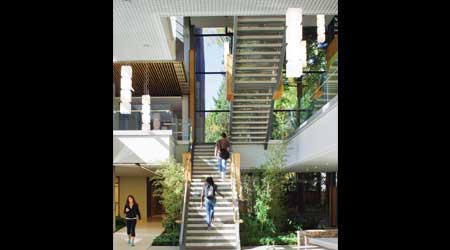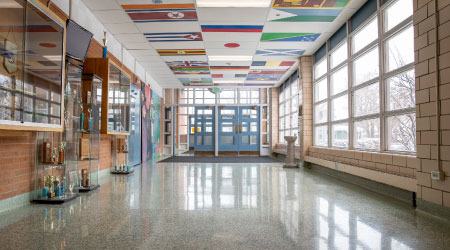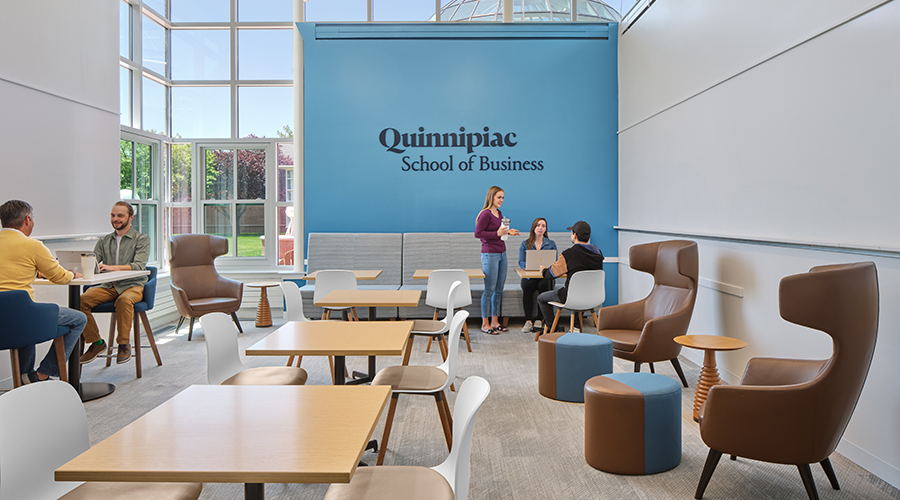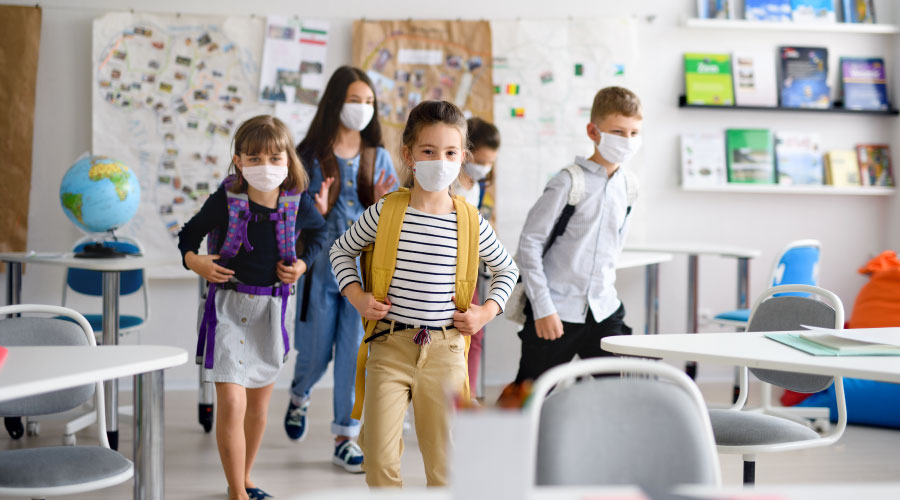 Colleges and universities are creating spaces that encourage movement, like these communicating stairs at Bridgewater State University.© Warren Jagger Photography
Colleges and universities are creating spaces that encourage movement, like these communicating stairs at Bridgewater State University.© Warren Jagger Photography3 Ways to Improve Facility Sustainability, Student Wellness
Increasingly part of the purview of facilities management, strategies to improve student health and wellness are taking on increasing importance in higher ed facilities.
Healthy, well-nourished students are more likely to be able to focus on their work, miss less school, and academically perform at a higher level. Student social, emotional, cognitive, and physical development can be positively influenced by a supportive learning environment. What environmental factors can positively impact student health and productivity?
1. Healthy food programs. When considering health and wellness, food is a natural place to start. Including “live” and raw food options for students and staff is becoming not just a selling point, but a necessity. Foods such as grains, vegetables, and fruit (commonly found in smoothies) bring increased energy and likely include enzymes, antioxidants, and assorted nutrients to support minds and bodies. Even simple changes like healthy options being offered in vending machines can make a notable difference to students’ well-being.
2. Designing for movement. Colleges and universities are creating spaces that encourage movement. Rethinking routes to promote purposeful movement can be done in a variety of ways. For example, consider the alignment of the facility’s stairwell. Instead of designing stairwells that go straight from the bottom of the building to the top, look for opportunities to create more communicative stairwells that shift floor-to-floor from one side to the other. This not only aids in flow but provides the potential for chance encounters. Offer biophilic touches like gardens or green walls where stairs land at a floor level, emphasizing locations where vertical connections are made.
Certainly, safety is part of the equation. When planning for fire stairs, consider small but impactful design features like utilizing natural light and providing hold-open access doors. This allows for unobstructed visual and physical access to perimeter fire stairs that are bathed in natural light. When in alarm mode, the fire doors close and provide the required protection.
3. Biophilic environments. Biophilic design has become prevalent in the building industry and provides connectivity to the natural environment; the strategy is known for its positive effects on the body and mind.
Including nature in design promotes wellness and improves mood and performance. By incorporating plants and foliage into interiors and blurring the distinction between inside and out, higher education institutions are creating more comfortable, collaborative, and productive spaces.
Another way to incorporate biophilic design is to capitalize on landscape views and optimize natural lighting through appropriate fenestration. Plants, animals, and water features can contribute to occupants’ health and productivity, via sight, smell, and sound. Combining an ensemble of these components can move the wellness agenda throughout the floor plate and be used as a wayfinding tool. A great example of this is currently under design at Lehigh University, where a communicating stair and associated floor openings on each level are complemented by gardens. The floor opening, stairs, and garden define distinct areas throughout the floor plate, emphasizing the wellness agenda while establishing a wayfinding tool in the process.
If nature itself isn’t available, manufactured nature is an alternative. Including natural materials, nature in art or imagery, or biomorphic shapes and patterns — also known as biomimicry — are all ways to design for increased emotional wellbeing and stress reduction.
Using design techniques to promote collaboration, productivity, and wellness, in tandem, help shape a holistic experience at higher education institutions. Whether a renovation or a new build, these principles can be incorporated to ensure a major impact on institutional recruitment and retention, and student preparedness for a career after college.
David Feth (DFeth@HGA.com), AIA, LEED AP, principal with Wilson HGA in Boston, has specialized in the design of teaching and research environments for higher education clients. He has led the design of numerous STEM (science, technology, engineering, and math) spaces.
Related Topics:














